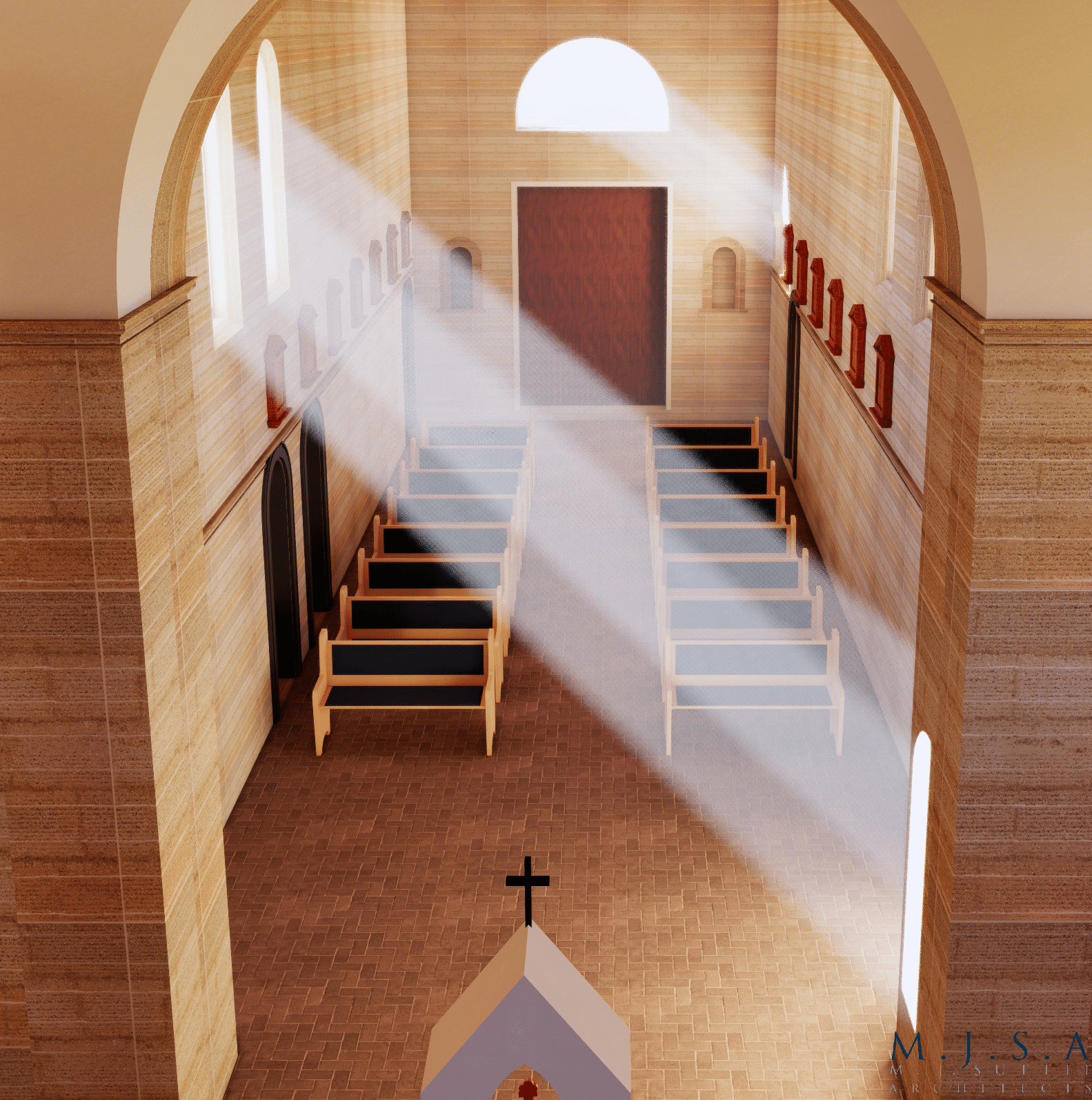
The Discalced Carmelite nuns in Mathoura in country New South Wales not only take a contemplative approach to their prayer lives, but are building their new monastery with a gentle and ancient method proven to stand the test of time.
Sections of the Great Wall of China and parts of ancient cities still standing in places like Egypt, Iran and Nepal owe their beauty and immutability to rammed earth construction.
There are different methods but rammed earth typically involves a mix of locally-sourced soil, clay and gravel shoveled layer by layer between a framework of panels, compressed, and left to dry before the framework is removed, leaving a free-standing earthen wall.
In an age when the fast-food equivalent of construction practices has left buildings crumbling barely before the paint dries, rammed earth is gaining attention for its simplicity, low environmental impact, sustainability and durability.
It’s also relatively low-cost, as under the supervision of experts low-skilled volunteers can take on much of the grunt work.
It’s still far from the mainstream but appears to be most popular with designers of luxury retreat villas and trendy restaurants or else off-gridders and other alternative types who like the idea of building their home with their own hands.
And visionaries like Mother Mariam Joseph, prioress of the Carmel of Elijah in Mathoura, a small town near Deniliquin.

She and her enclosed community of nuns definitely plan to get their hands dirty in the monastery building project, working late into the night before their recent five-year anniversary celebrations to produce samples of rammed earth for their supporters.
They have charged Sydney architect Michael Suttie, lead designer of the Benedict XVI Retreat Centre, with their vision for a beautiful and environmentally responsible build that will last for centuries.
When I called him up to ask him what was so good about building with rammed earth, he explained that the current building culture supports structures that will only hold up for a mere 30 to 100 years “if lucky” before they start to fail “catastrophically.”
“Our culture has an obsession since World War II times with every building utilising reinforced concrete, which while it is strong doesn’t have long-term durability,” he explained.
“Eventually they’re susceptive to concrete cancer, but by returning to traditional load-bearing masonry structures using traditional methods such as rammed earth you get buildings that we know can last hundreds or thousands of years.
“And really, if our society is going to be paying anything beyond lip service to environmental sustainability we need to be re-engaging with these traditional construction methodologies.”

Natural rammed earth walls are also naturally insulating at between 400mm and 600mm thick and the new monastery design also includes a water feature and other natural elements to provide heating and cooling, making artificial air-conditioning unnecessary.
Suttie is full of admiration for Mother Mariam and the sisters, who already have some form with US-based members of their order working similarly hands-on in a monastery building project using dry stone in Fairfield, Pennsylvania, since 2018.
“It takes so much dedication and determination to change the culture in this area because you are swimming against the tide along the way with regulations based on mainstream practices that are fundamentally flawed on certain levels, and with engineers who aren’t familiar with [the rammed earth method],” he said.
Suttie agreed that it all brings to mind Pope Francis’ call in Laudato Si to resist in every way a “throwaway culture.”
“It’s also really important from the perspective of classical architecture to make it beautiful as well as durable,” he added.
“If it’s not beautiful, regardless of whether it is well-built or not, people will knock it down or neglect it. On the flipside, if you make it beautiful people will look after it and that is essential for it to stand the test of time.

“This monastery, particularly the sisters’ cells, will be fairly humble but we are still working to keep the proportions and bring some beauty into it. The chapel design has a higher ceiling and a noble simplicity to it but all of it is designed to be beautiful.”
